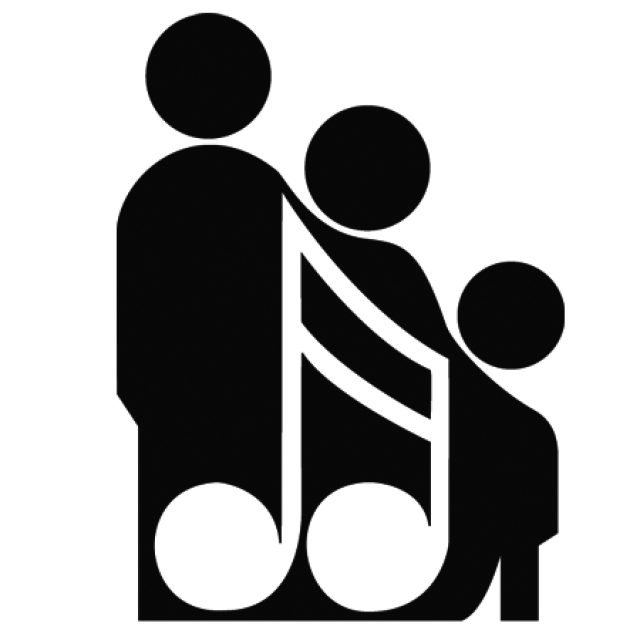I have found my teaching more impactful when I work effectively with parents in the Suzuki journey. After many years of developing strategies through trial and error, I created a list of concrete ways to involve parents more fully in the learning experience. This applies not only to lessons and home practice, but to creating a Suzuki community, and even to the daily rhythms of our lives. Below are some ideas to actively involve parents in the Suzuki lesson beyond note-taking that have worked well in my studio. The word “parent(s)” refers to any caregiver who is part of the Suzuki student’s journey. Most of these strategies assume the parent is physically present in the lesson with the student, but these can be modified for teaching virtually. I appreciate all my mentors and colleagues along the way who helped me put this list together.
Teacher Strategies
-
Begin the lesson by asking not only the students but also the parents about their day.
-
Make eye contact with the parents throughout the lesson, especially if they seem lost in their thoughts.
-
Share smiles with the Suzuki parents as much as you do with the students.
-
Rearrange your teaching space for optimal viewing access by all lesson-attending parties.
-
Give parents feedback on the work they do with their children, just like you give students feedback on their performances.
-
Ask parents questions that would help reveal their understanding of a “beautiful tone.”
-
Remember that if something taught in the lesson is unclear for the student, it is likely not clear to the parent, either.
-
Repetition is good not only for the student but also for the parent. Repeat any parent inclusion strategy you think is effective.
-
Have the parents sit in the “teacher” chair for a better view when working on a specific skill.
-
Have parents physically adjust students with your guidance.
-
Have parents use “one-touch reminders” to bring students’ attention to various posture needs (i.e., a gentle touch on violin hand for proper position).
-
Have students play for parents while they face each other.
-
Have students tell the parents what to write in their Suzuki notebooks.
-
Ask parents to demonstrate for the students.
-
Invite parents to engage in all lesson activities along with their child during the first few lessons or prior to the student’s first lesson.
-
Have parents take videos of any portion of the lesson that would be helpful for them to have at home.
-
Have the students teach the parents in the lesson.
-
Alternatively, have the parents teach the students in the lesson.
-
Have the parents sit in close proximity and have a clear view of you and the student for easy access.
-
Ask parents to show you how to practice a skill with the students in the lesson, demonstrating the steps you hope to see during home practice.
-
Allow parents to demonstrate how to practice a skill in its entirety before sharing suggestions for improvement.
-
Parents should applaud whenever a bow occurs. Make a game out of it and ask your students, “Do you think your parents are going to forget to clap?”
-
Give the parent an active role in any game you play in the lesson (i.e., the parent claps every time the student needs to stop playing to check their playing position feet).
Outside of the Lesson
-
Have the parents sing with the students.
-
Have parents send you short video clips of their student’s playing when trying to answer questions via email that are difficult to understand without hearing and seeing the student.
-
Include the parents in celebrating a student’s achievement (i.e., high five the parents after giving the student a high five for a good performance).
-
Share any readings with parents you think may be of interest.
Communication
-
Ask the parents the same questions you ask the students.
-
Have the parents and students summarize what needs to be practiced in the last few minutes of the lesson.
-
Be sure to leave time in the lesson to answer any questions parents may have.
-
Ask parents to share something positive about their child’s playing.
-
Ask parents questions about practice habits regardless of how well practice is going at home.
-
Have a “leave a note” box ready for parents to drop off notes for you. This box is for comments parents may not want to share with you in front of students or simply for thoughts they did not want to forget to share with you.
-
Schedule a parent-teacher conference.
-
Have parents fill out an informational sheet before their parent-teacher conference with any information you would like to know before your meeting.
-
Have a short “end of class” conversation with parents about any insights you would like to share about their child, or simply strike up a conversation.
-
Investigate what motivates a parent, just like you would for your students. Understand their “why.”
-
Listen to parents deeply when they speak to you about their child. Try to understand the root cause of any comments they share with you.
-
Send parents emails, texts, or notes expressing the joy you feel seeing their child improve and develop.
-
Regularly share with parents a positive comment about their Suzuki journey.
-
Ask questions of the parents that help reveal their end goals for Suzuki instruction. Help make the connection between what you are teaching students and the parents’ end goals.
-
Review with parents any component of the Suzuki lesson or philosophy you think is getting forgotten during home practice.
-
Seek a parent’s trust before you do anything else by showing your heart and your expertise.
-
Ask parents, “How can I help make this easier?” whenever possible. We spend time helping make things easier for students. We should do the same for parents.
-
Think about nonverbal ways for parents to provide quick feedback to the student so you can check on their understanding of the practice assignments (i.e., thumbs up if parents think their student’s bow hold has round and soft fingers).
Community Building
-
Have ongoing parent sessions for additional learning opportunities such as parent talks, or group classes for parents instead of students for a week.
-
Have parents assist you in the execution of concerts or workshops. Hospitality roles are particularly well-suited for Suzuki parents.
-
Have parents work with a different student than their own child during group classes.
-
Have more experienced Suzuki parents share any insights about their Suzuki journey with newer Suzuki parents.
Most Importantly
- Remember: Every child can, and by extension, every parent can.









